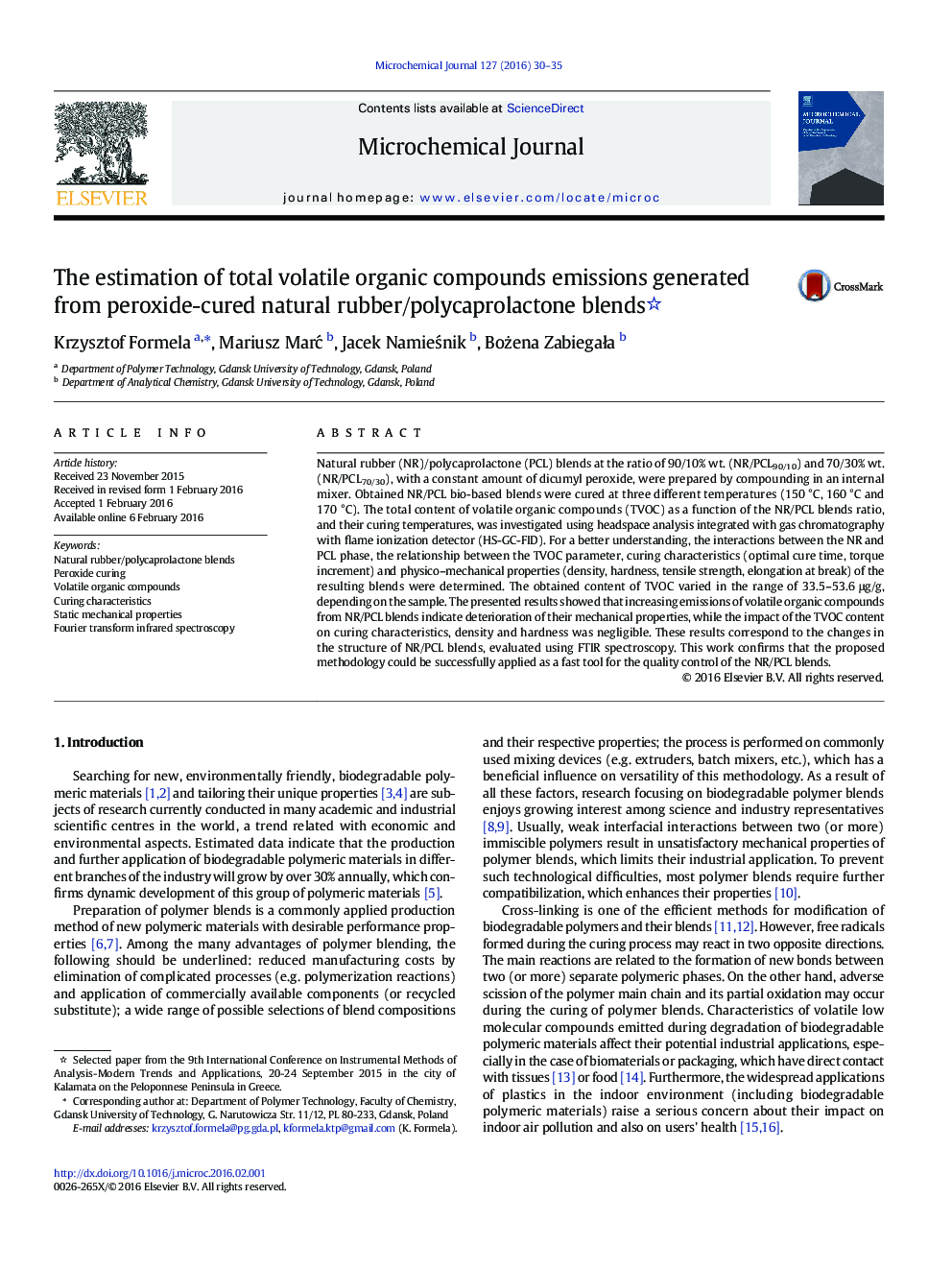| کد مقاله | کد نشریه | سال انتشار | مقاله انگلیسی | نسخه تمام متن |
|---|---|---|---|---|
| 1227497 | 1494867 | 2016 | 6 صفحه PDF | دانلود رایگان |
• Correlations between TVOC, processing and physico-mechanical properties of NR/PCL blends were evaluated.
• HS-GC-FID technique for analysing TVOC emissions from studied blends was proposed.
• TVOC as function of NR/PCL blends ratio and their curing temperature was determined.
• The results showed that TVOC analysis could be successfully applied as a fast tool for NR/PCL blends quality control.
Natural rubber (NR)/polycaprolactone (PCL) blends at the ratio of 90/10% wt. (NR/PCL90/10) and 70/30% wt. (NR/PCL70/30), with a constant amount of dicumyl peroxide, were prepared by compounding in an internal mixer. Obtained NR/PCL bio-based blends were cured at three different temperatures (150 °C, 160 °C and 170 °C). The total content of volatile organic compounds (TVOC) as a function of the NR/PCL blends ratio, and their curing temperatures, was investigated using headspace analysis integrated with gas chromatography with flame ionization detector (HS-GC-FID). For a better understanding, the interactions between the NR and PCL phase, the relationship between the TVOC parameter, curing characteristics (optimal cure time, torque increment) and physico–mechanical properties (density, hardness, tensile strength, elongation at break) of the resulting blends were determined. The obtained content of TVOC varied in the range of 33.5–53.6 μg/g, depending on the sample. The presented results showed that increasing emissions of volatile organic compounds from NR/PCL blends indicate deterioration of their mechanical properties, while the impact of the TVOC content on curing characteristics, density and hardness was negligible. These results correspond to the changes in the structure of NR/PCL blends, evaluated using FTIR spectroscopy. This work confirms that the proposed methodology could be successfully applied as a fast tool for the quality control of the NR/PCL blends.
Journal: Microchemical Journal - Volume 127, July 2016, Pages 30–35
